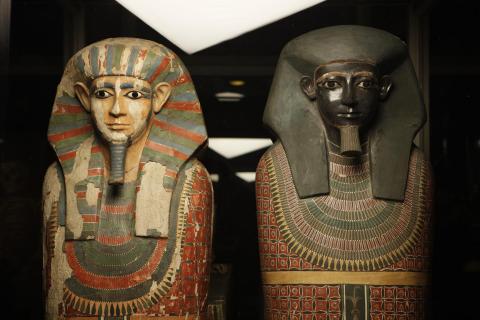The remains date to around 1800 B.C. but there has always been argument about whether or not the two are actually related even though they share a joint burial site at Deir Rifeh, a village 250 miles south of Cairo. Hieroglyphic inscriptions on the coffins indicated that both men were the sons of an unnamed local governor and had mothers with the same name, Khnum-aa. It was then the tomb and the men became known as the Two Brothers.
DNA analysis shows it wasn't that they had the same mother, or even different mothers with the same name - they had different fathers. So they are half-brothers.

The Two Brothers, Khnum-nakht and Nakht-ankh. Image credit: Manchester Museum, The University of Manchester
The confusion arose after the remains were shipped to Manchester in 1908 and unwrapped by Egyptologist Dr. Margaret Murray, who declared that the skeletal morphologies were too different to have family relationship. They proposed that one of the Brothers was adopted.
In 2015, the DNA was extracted from the teeth and, following hybridization capture of the mitochondrial and Y chromosome fractions, sequenced. Analysis showed that both Nakht-Ankh and Khnum-Nakht belonged to mitochondrial haplotype M1a1, suggesting a maternal relationship. The Y chromosome sequences were less complete but showed variations between the two mummies, indicating that Nakht-Ankh and Khnum-Nakht had different fathers, and were thus very likely to have been half-brothers.
This is the first analysis to successfully use the typing of both mitochondrial and Y chromosomal DNA in Egyptian mummies.




Comments